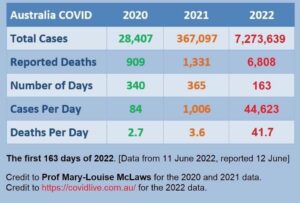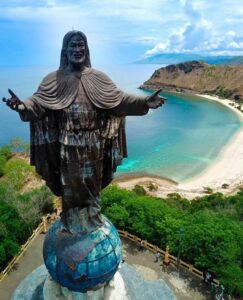 Above is a cross-section of a camphor laurel tree. The wood is considered to have an even texture but has moderate durability; the colour diversity is shown in the photo. It is used for furniture, especially veneer. Because of its grain and lightweight, it is used in decorative craft.
Above is a cross-section of a camphor laurel tree. The wood is considered to have an even texture but has moderate durability; the colour diversity is shown in the photo. It is used for furniture, especially veneer. Because of its grain and lightweight, it is used in decorative craft.
Yet the camphor laurel is classified as a noxious weed in NSW. Unfortunately, it was introduced in the 1820s, and was used as a shade tree in rural areas. The wood is popular for furniture because of its attractive grain and light weight. Camphor oil used to be produced commercially as a liniment for aches and pains, but its commercial production was banned after too many lethal ingestions.
Across the road from our home is a giant camphor laurel with its characteristic smell. We are constantly plucking the seedlings from the garden. It is an arboreal predator and if left unchecked, spreads across land where it was innocently planted as a wonderful shade tree, not as an arboreal predator.
This tree has been tolerated by our local Council, whereas the clumping bamboo, which was grown in the lane by the previous owners to protect the house from dust in the lane and the sound of traffic down this lane, which once served as a “rat-run”, was the subject some time ago of inspection and deemed as a noxious weed, although it is a clumping bamboo. Nothing happened. In fact, the Council policy, uncritical green, does nothing in the name of conservation. So, when the liquid amber (planted by previous owners) invaded the terracotta pipes, causing a blockage, we cleared the pipes, repaired the damage, and then cut down the tree which had become a hazard, and ground the stump into sawdust.
When trees grown by Councils are involved in damaging property, it seems to be their responsibility. However, there seem to be so many loopholes through which arrows of obfuscation can be fired on the crowd down below from the Council’s castle that we rate-paying peasants are easily confused by this flight of regulations raining down on us from these nouveaux feudal lords known as The Council.
Yet there was a recent report of a significant judgement against a local Council that planted a white cedar so close to the plaintiff’s home and caused such significant cracks in the brickwork, that the house had to be rebuilt.
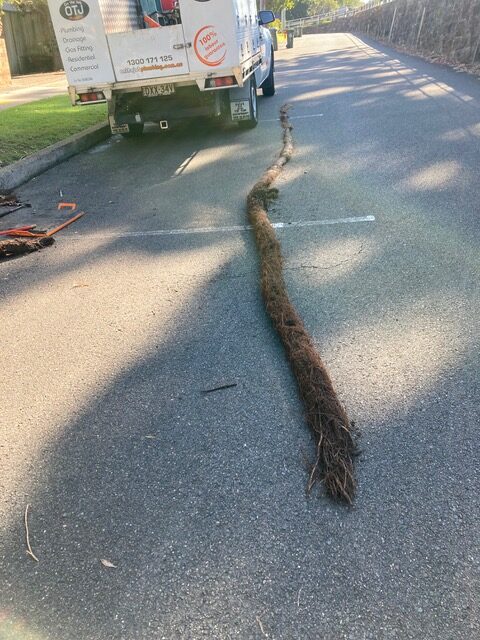
One of my friends had a joust with a tree planted outside her house. Recently, she started having troubles with her plumbing. Blockages and flooding of her basement floor occurred. Eventually she employed a plumber with the skill to extract nature’s legacy. Shown here is the root extracted from the plumbing.
The only responsibility the Council seems to accept is that it planted the tree, but as for the vagaries of the tree with its extensive invasive properties, they just look the other way, although they have promised to cut down the tree. Obviously, Councils’ second line of defence is stonewalling to encourage the afflicted to use their own home insurance when the flight of regulations is repelled.
One of the problems is that a casualty in the urbanscape is the tree. If migrants come from countries, scarred by war or poverty, the tree is not a high priority. Couple it with the obsession to build the house over the whole land leaves almost no space for gardens. The developer, usually at the behest of the local Council, plants a desert ash or a similar tree on the nature strip. Left to the elements with nobody responsible for their maintenance, it is not surprising how many soon die or shrivel into a forlorn remnant.
The conventional garden with which I grew up, with avenues of trees in the suburbs, are disappearing. I was watched the TV program “Gardening Australia” on and off for years. European gardens are the featured topics, and the suburban gardens are steadily shrinking or going indoors, so the tree is less featured. Migrant gardens concentrate on food, and the trees grown are those which produce fruit.
We planted an olive tree on the verge outside our house some years ago after the nondescript previous tree had been knocked over by a car. The olive tree has yielded annual crops of up to 5kgs of olives. Passing school children have learnt the lessons of biting into a freshly harvested olive.
Passers by some years have swiped the crop before we could harvest it. That indicates our olives have “a market”. I have thought, what if the street were lined by olive trees with each household encouraged to look after them – the whole program being an initiative of the local council. Then the annual olive harvest street party would provide a useful product, while assisting the development of that elusive quality “community” – rather than the street trees being an object of resentment or neglect.
Aftermath
One of the laws of politics is never promote somebody more intelligent than you are; and moreover, having a more deft touch. Prime Minister Albanese is a case in point. The latest Budget which the Treasurer produced shows the empty cranium of Labor policy. Just because the leader of the Opposition has been described by a former West Australian Premier as a “dullard”, it does not excuse the Budget handed down last week.
Big deal – giving all Australians a small relief for their energy bills, when the government is piling high the subsidies for the fossil fuel industries, including the Gorgon carbon capture project, which does not work. Everybody, including the Gorgon owners, knows that – except apparently Albanese.
The disaster for Albanese was his choice of a West Australian to be Minister for Resources. She represents the inheritors of a once mendicant State, now with overflowing coffers, despite most of its resources being shipped overseas, from which Australia gets a pittance. West Australia with its budgetary surplus is hardly mendicant, but it still wants more.
Added to this, Australia is now using taxation revenue to give the fossil fuel industry literally a free handpass, providing it de facto $566.1m courtesy of Geoscience Australia activity; “to map Australia’s endowments of critical minerals and national groundwater systems”, for which industry does not have to pay a cent. The industry pays nothing for having access to what I would have thought should remain a resource to be bought under licence. I would have thought there should be also security concerns. I cannot understand why, given the paranoia keeping secret every piece of Government trivia, especially if it is hiding corruption.
At this point it is noted that the Woodside boss is an American, a hired gun who has roamed the world as an Exxon paladin. No allegiance to Australia but to American Mammon.
Contrast this highly qualified carpetbagger who runs Woodside to another chief executive, for whom Australia was all important, where his work in building BHP underpinned Australian prosperity – Essington Lewis.
He assisted in the establishment of the Commonwealth Aircraft Corporation and many munitions facilities meaning Australia was better prepared for industrialisation when the war started in 1939. During World War II, he was the Director-General of the Department of Munitions under John Curtin (incidentally elected from West Australia).
Different times. Different Prime Minister.
Today, the Labor Government flounders around in the wreck of neoliberalism, where philanthropy is bribery, the strings attached in a tight coil so that, to borrow a phrase, it becomes a “road to serfdom.”
Fortunes have been amassed, where cabals have substituted for the theoretical free markets, corrupted by political influence, as public servants, parliamentarians, lobbyists and consultancy firms feed from a golden trough labelled Taxation Revenue.
What has Woodside contributed to Australian prosperity?
Richard Goyder, one of the lesser druids of neoliberalism says it all in his latest Woodside Chairman’s annual report:
“… delivering strong operational and financial performance, laying the foundations for future growth, while continuing to return value to shareholders – speaks to the quality of our company’s current leadership and strategy.”
Shareholders, not Australia, note. His speech, a paean to neoliberalism. Globalisation means that capitalism is unbothered by national borders, but in reality the world economies are retreating into protectionism, in the face of this failure of globalisation.

How the Government is handling the quantum computing handout is not a particularly good look, but it is a relic of providing without due diligence. One may ask where is the business plan? PsiQuantum is a quantum computing start-up that this month received one billion dollars from the Australian government in the Budget forward estimates.
By contrast, the British government, has granted PsiQuantum £9 million ($17.1 million) to assist the company set up an already functioning R&D facility at the Daresbury Laboratory (home to the Accelerator Science and Technology Centre [ASTeC] and the Cockcroft Institute), and it’s not the only company to have been given a grant. The British are wondering what is going on here in Australia – and they are not the only ones. Only another day in the mates’ quagmire government.
By the way, the Chinese and Americans are well ahead, while Australia awaits the facility to be built in Brisbane so Australia can stride to the front of the field rather it being the Big Squander.
The Labor Party is retreating towards protectionism, while Australia is drowning in mateship where corruption is ever present. There are many examples of “mates in cahoots with corruption”. The word is “rort”, an Australian slang derived from “rorty”, English Cockney rhyming slang. Yet there seems to be undue reluctance to pursue the players in each of the myriad examples of rorting scattered around the various parliaments. Bad look!
Watch for the advance of the “coloured parties” at the next Federal election. The lustre of the Aston electoral win has well and truly been lost. An obsession with retaining West Australian seats, while neglecting Victoria and NSW, is not very smart politics.
Unbelievable
The political implications of the new Great Stink are about to become even more significant, however, because the finances of Britain’s privatised water industry, which has taken on debts of more than £60bn since it was privatised in 1989, are if anything more putrid than the rivers it pollutes. The largest of Britain’s water companies (the same company that is spilling sewage into Colwell Brook) is Thames Water, which supplies water and sewage services to 16 million people. It may be about to collapse.
A person with inside knowledge of Thames Water, who asked not to be identified, told me about the wide spread frustration within the company at failing equipment and a lack of money to fix problems that have been growing for years. They also said there is a sense among those working for Thames Water today that they are paying the price for the past, specifically the years 2006 to 2017, when the firm was owned by the Australian investment manager Macquarie. It loaded Thames Water with billions in debt while paying very large dividends. In that time, debt rose from £3.4bn to £10.8bn. New Statesman
Sydney Water is a statutory state-owned corporation. It is 100% owned by the people of New South Wales. Two shareholding ministers fully own the shares in Sydney Water, on behalf of the people of NSW. The shareholding ministers of Sydney Water are the Treasurer and the Minister for Finance.
The factual statement about our water supply here in Sydney is reassuring. Bloody Hell, what if I would have some hedge fund located in New York owning it; and that applies equally to our home-grown equivalents.
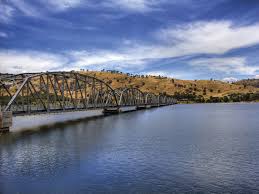
The privatisation of water, one of our last major resources in government hands, so fundamental to our continent, so prone to drought, should not ever be even a footnote, even of the most corrupted politicians. Given the experience of selling the electrical infrastructure and toll road gouging, one could imagine the price of water during drought. The last sentence from New Statesman’s excerpt of the English experience says it all.
Currently we Australians are the shareholders in our water resources rather than gougers, for instance, in Cayman Islands!
The Last Kampong
 In the 2021 December issue of The Economist there is a very perspicacious article about the last kampong (Malay village) in Singapore, owned by a Ms Sng, which is the Kampong Lorong Buangkok. When the article was written she was living there with 25 tenant-households that pay a small rent. It frequently floods and is earmarked for future development projects, because there is very little land left in this Island-State, which was once just a series of kampongs before it became a Chinese commercial republic.
In the 2021 December issue of The Economist there is a very perspicacious article about the last kampong (Malay village) in Singapore, owned by a Ms Sng, which is the Kampong Lorong Buangkok. When the article was written she was living there with 25 tenant-households that pay a small rent. It frequently floods and is earmarked for future development projects, because there is very little land left in this Island-State, which was once just a series of kampongs before it became a Chinese commercial republic.
I remember a vain search of the kampongs during a visit to Singapore in 1974, because I was told that I could find Kitchen Ming ware there, and at a good price. I was sold “a pup”, no Kitchen Ming anywhere. As a parenthetic comment, thirteen years later, I received Kitchen Ming as a present for my birthday. That was my kampong adventure, and it is a distant memory, now stimulated by reading the Last Kampong.
Singapore was a colonial outpost thought by the British to be perfectly fortified, with all the heavy artillery aimed out to sea, whereas the Japanese came in the back entrance invading down the Malay peninsula in 1942 and overwhelming the inadequate Allied forces stationed there.
Singapore then was a mosaic of kampongs dotted with the elements of British rule such as Raffles Hotel, symbols of a time when the red colour of Albion dominated the Globe. Raffles survives. I’ve stayed there where the signature Singapore sling can still be quaffed and having Tiffin – north Indian snacks directly from the maharajah table combined with elements of the English breakfast.
But while I have experienced staying at this once jewel colonial hotel in Asia, in 1971 we stayed in a much lesser hostelry, The Goodwood Park Hotel. It was only ten years earlier that 70 per cent of Singaporeans lived in kampongs. By 1990, 87 per cent lived in government housing. The transition had taken 20 years, and showed what a central government can deliver with a strong leader, Lee Kuan Yew who, from the outset of his government in 1965, had a clear vision of the place of the new Republic of Singapore in Asia.
This housing change was achieved by a combination of factors with a workforce which would be impossible in Australia, where the ideals of a Federated Country have been reduced to endless bickering and point scoring.
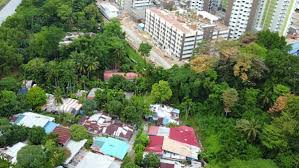 While the Last Kampong has had chunks of its land removed, it still remains as a viable if shrinking reminder of Singapore’s heritage. One should be reminded that the Government has recently sacrificed the local racing industry to residential development. The economics of the racing industry were less important than housing; a logical lesson which Australian would find impossible to entertain. Think back to the NSW Government’s cowardice in its failed attempt to close down greyhound racing, one of the most distasteful manifestations of Australian culture, consuming as it does valuable real estate. Then contrast this with the Singaporean priorities.
While the Last Kampong has had chunks of its land removed, it still remains as a viable if shrinking reminder of Singapore’s heritage. One should be reminded that the Government has recently sacrificed the local racing industry to residential development. The economics of the racing industry were less important than housing; a logical lesson which Australian would find impossible to entertain. Think back to the NSW Government’s cowardice in its failed attempt to close down greyhound racing, one of the most distasteful manifestations of Australian culture, consuming as it does valuable real estate. Then contrast this with the Singaporean priorities.
Why does the Last Kampong survive? It does have its political defenders, not senior people in government, but sufficient to argue the case to preserve a time when it was the way of life. By doing so, it invites the young to enjoy a sliver of Singapore’s past. Maybe that is too romantic construction.
The Singapore Government has responded at times by saying it would not seize the village for several decades, whatever the reasons.
Lee Kuan Yew was a leader, with vision for his electorate. He was authoritarian and turned Singapore into a one-party state. He was not flawless, but he encouraged his people to accept his vision rather than repressing and plundering the State.
He had the touch, which few of our political leaders have ever had, but he lived in a country of 727 sq kms, but with a population which grew three-fold and a mean income from Sg$2,000 to Sg$ 70,000 today. Easier to control than Australia goes without saying.
The Last Kampong provided me with the impossibility of the current Australian housing policy. It has no link to anything but reduced migration at a time when there are an estimated 11m dwellings for 26m people of which 1m were unoccupied at the time of the last Census, and more intimately 13m empty bedrooms. The relevance has been contested for many reasons, all of which are speculative, but on average the 2021 Census reported about 7 to 8 per cent empty houses were in the capital cities. That is not very much different from the Singapore figure.
But Singapore does not have the genius of Peter Dutton to also make sure the guns are still aimed out to sea.
I await the Last Victorian Lace.
Forbes Advocate
I have just taken out a Forbes Advocate subscription to see how the Forbes community are reacting to providing the protection the mayor announced after the murder of Molly Ticehurst for women in the community from future violence.
A walk in the park is hardly a permanent solution.
I’ll monitor the Forbes Advocate for the next month.
Inter alia, I note in the current issue reports of the arraignment of a 63 year old man living in Forbes for 71 historical sexual assault charges between the 1974 and 2023 regarding four then underage girls.
In a community traumatised by Molly Ticehurst’s death, what did the magistrate do? Bail as reported was refused, even though he was being treated for leukaemia and had been awarded Forbes’ Citizen of the Year in 2022.
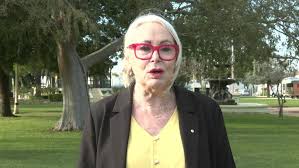
The Mayoral response to protect her community seems to have an effect perhaps. More direct action by the community to be shown?
So here goes, seeing what the community does over the next month.
Mouse Whisper
Last week, I was watching ABCR – ABC Rodent, when the Treasurer, Jim Chalmers, was delivering his Budget Speech, setting out the financial prospects for the oncoming year in Australia.
On the companion channel, ABCR22 was sensitively screening the BBC program “Would I Lie to You?” This program is hosted by Rob Bryden, who has a surprising resemblance to Jim Chalmers.
“Would I lie to You?” was a bit more entertaining and not one use of the word “responsible”.
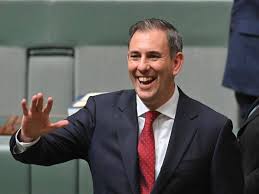


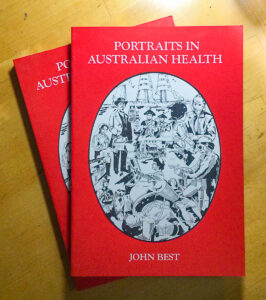 I have written this story before, but the proposal to increase the travel allowances of patients living in country areas of NSW reminds me of a story which appeared in my 1988 book “Portraits in Australian Health” released in the Bicentenary year, to my knowledge the only book which the Federal Department of Community Services and Health sponsored to honour this occasion.
I have written this story before, but the proposal to increase the travel allowances of patients living in country areas of NSW reminds me of a story which appeared in my 1988 book “Portraits in Australian Health” released in the Bicentenary year, to my knowledge the only book which the Federal Department of Community Services and Health sponsored to honour this occasion.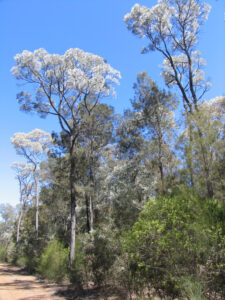
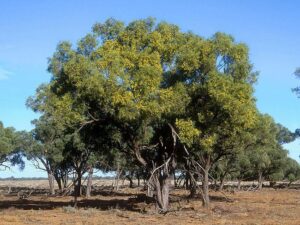
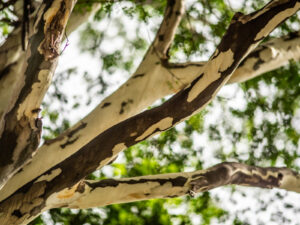
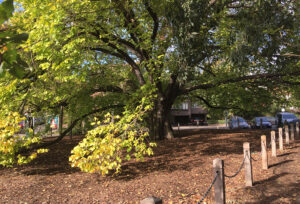 The amazing element which I found as I entered the dense canopy, seeking an unmarked specimen of leaf, at a time when I was collecting the various glabrous leaves of these trees, was that when you were under the canopy your vision was only of the foliage. The outside world was blotted out. Branches nearly touch the ground, and others are propped up. Here, there was a tranquillity, and even though close by, the traffic noise was muted, although the smell of the dusty, dirty city does penetrate through the foliage.
The amazing element which I found as I entered the dense canopy, seeking an unmarked specimen of leaf, at a time when I was collecting the various glabrous leaves of these trees, was that when you were under the canopy your vision was only of the foliage. The outside world was blotted out. Branches nearly touch the ground, and others are propped up. Here, there was a tranquillity, and even though close by, the traffic noise was muted, although the smell of the dusty, dirty city does penetrate through the foliage.